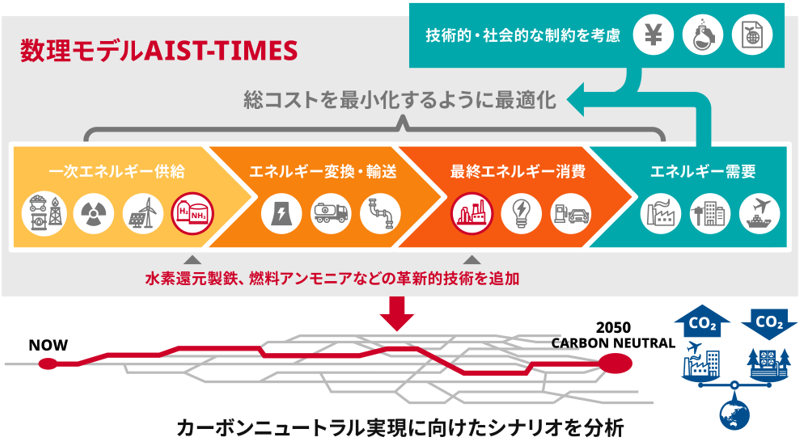2025-02-03 インペリアル・カレッジ・ロンドン (ICL)
<関連情報>
- https://www.imperial.ac.uk/news/260556/ka-boom-ai-reveals-meteoroid-impacts-making/
- https://agupubs.onlinelibrary.wiley.com/doi/10.1029/2024GL109133
- https://agupubs.onlinelibrary.wiley.com/doi/10.1029/2024GL110159
火星における新たな衝突: InSight地震イベントの系統的同定と関連付け New Impacts on Mars: Systematic Identification and Association With InSight Seismic Events
V. T. Bickel, I. J. Daubar, G. Zenhäusern, G. Doran, C. Charalambous, B. Fernando, A. Sokolowska, K. L. Wagstaff, T. Pike, S. C. Stähler, J. Clinton, D. Giardini
Geophysical Research Letters Published: 03 February 2025
DOI:https://doi.org/10.1029/2024GL109133

Abstract
The InSight lander represents a unique opportunity to correlate seismic data with impact events identified in orbital images, enabling the characterization of the physical properties of the martian crust and mantle. Here, we present the first comprehensive catalog of impacts that occurred during the InSight mission within a 50° radius around the lander. We use a machine learning-enabled approach to identify 123 date-constrained impacts with diameters between ∼1 and 22.5 m. We estimate an impact rate of 2.7 × 10−6/km2/year for >3.9 m effective diameter, which is ∼1.6–∼2.5 times higher than previously derived for Mars. We identify 49 seismic events with one or several potential impact match(es) including a 21.5 m crater located near Cerberus Fossae. Our catalog will enable a more accurate characterization of the propagation of seismic body waves at intermediate distances to InSight (5–50°), with major implications for estimates of other seismic event distances.
Key Points
- A machine learning-enabled approach identifies 123 impacts near the InSight lander that likely happened during seismic monitoring
- Our results suggest potential impact matches for 49 seismic events based on event timing, magnitude, and distance
- The estimated impact rate is ∼1.6–∼2.5x higher than previously observed in orbital data, but ∼5x lower than derived from seismic data
Plain Language Summary
The joint analysis of seismic data and satellite information about impact events can lead to the identification of matches between impacts and marsquake events, which enables the characterization of the physical properties of the martian crust and mantle. We scan through a large amount of orbital image data and identify 123 impact craters that formed between December 2018 and December 2022, 49 of which might also have been recorded by the NASA InSight lander’s seismometer. We use our impact catalog to estimate the impact rate on the martian surface, which seems to be higher than the rate derived by previous surveys. Our results provide important information about the dynamics of the martian surface as well as the behavior of seismic waves in the martian subsurface, which will affect earlier estimates of seismic event distances.
火星における新たな衝突: ケルベロス・フォッサの衝撃検出による地震伝播経路の解明 New Impacts on Mars: Unraveling Seismic Propagation Paths Through a Cerberus Fossae Impact Detection
Constantinos Charalambous, W. Thomas Pike, Benjamin Fernando, Natalia Wójcicka, Doyeon Kim, Marouchka Froment, Philippe Lognonné, Savana Woodley, Lujendra Ojha …
Geophysical Research Letters Published: 03 February 2025
DOI:https://doi.org/10.1029/2024GL110159

Abstract
To date, eight meteoroid impacts have been identified in the seismic record of NASA’s InSight mission on Mars, occurring either within 300 km or beyond 3,500 km. We report the association of a high-frequency marsquake, S0794a, with a new 21.5-m-diameter impact crater discovered at an intermediate distance of 1,640 km in the tectonically active Cerberus-Fossae graben system. This impact enables the direct comparison between surface and subsurface sources, as well as providing the first data point in the critical gap between previous impacts, both in distance and crater size. Additionally, the location of this event necessitates a reassessment of assumed seismic raypaths that were thought to propagate along a slow crustal waveguide. We find that the raypaths instead penetrate and travel through the faster mantle, implying numerous identified marsquake epicenters should be relocated up to two times farther from InSight, with implications for seismically derived impact rates and regional seismicity.
Key Points
- We associate a new 21.5-m Mars impact crater in the tectonically active Cerberus Fossae region with InSight’s seismic event, S0794a
- The location derived seismically and via orbital imaging implies the impact’s energy traveled significant distances through the mantle
- This challenges previous assumptions of a crustal waveguide, resulting in more distant locations for many high-frequency marsquakes
Plain Language Summary
We have used global and high-resolution orbital imaging to discover a fresh crater that appeared at the same time as one of the quakes detected by NASA’s InSight lander. This means the seismometer detected a meteoroid strike rather than geological activity within the planet. We know the location of this impact as well as the timing of seismic energy arriving by different types of vibrations which traveled through Mars at different speeds. With this information, we can work out that these waves penetrated below the crust and into the mantle rather than being confined to the crust as previously thought. This new path of propagation leads us to question how far away other marsquakes were from the InSight lander. This has implications for both how often marsquakes occur as well as how frequently meteoroids hit Mars.



